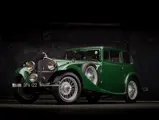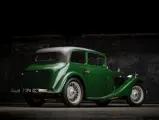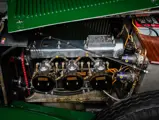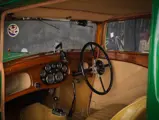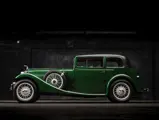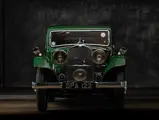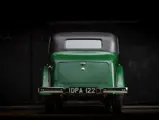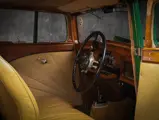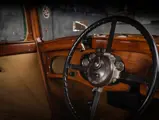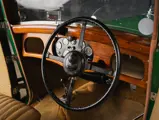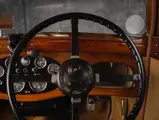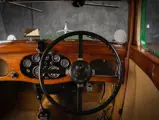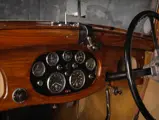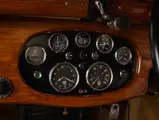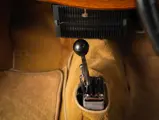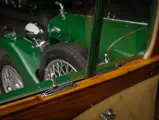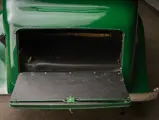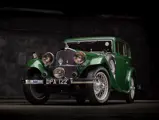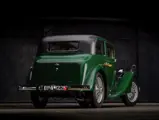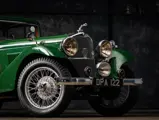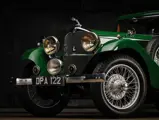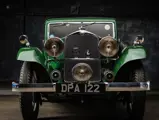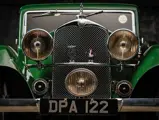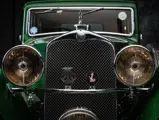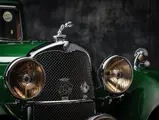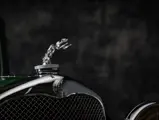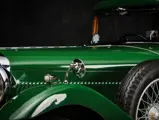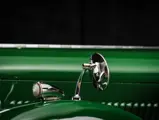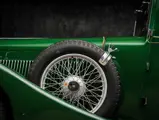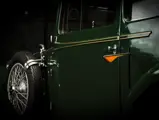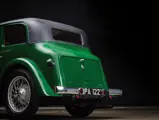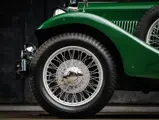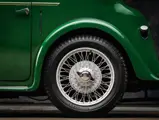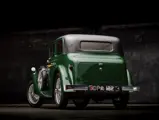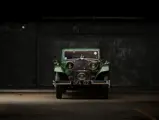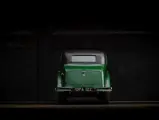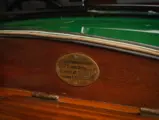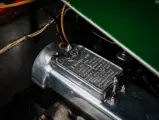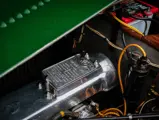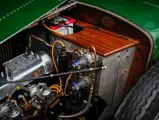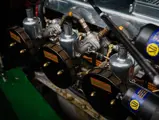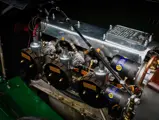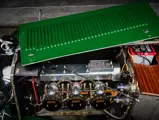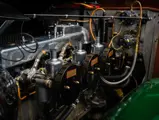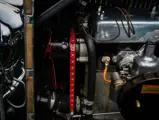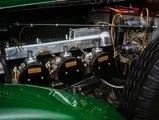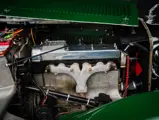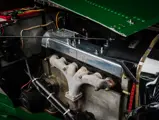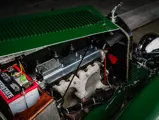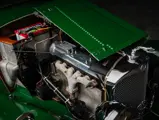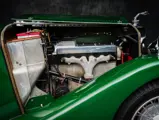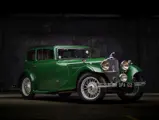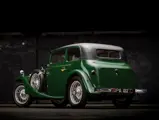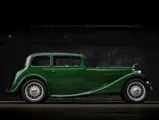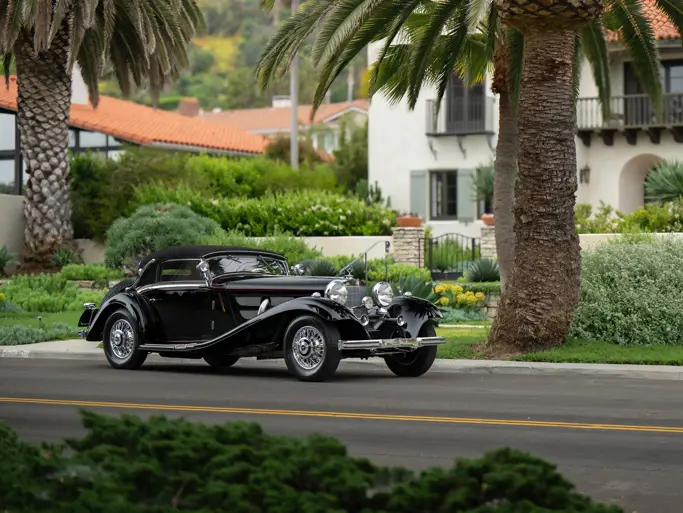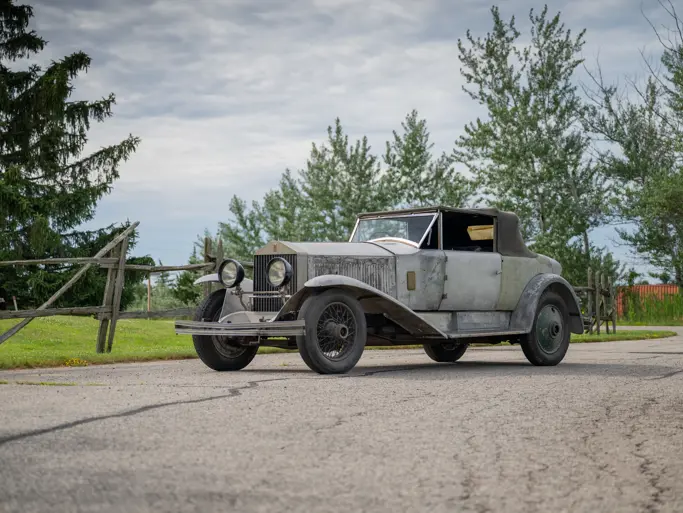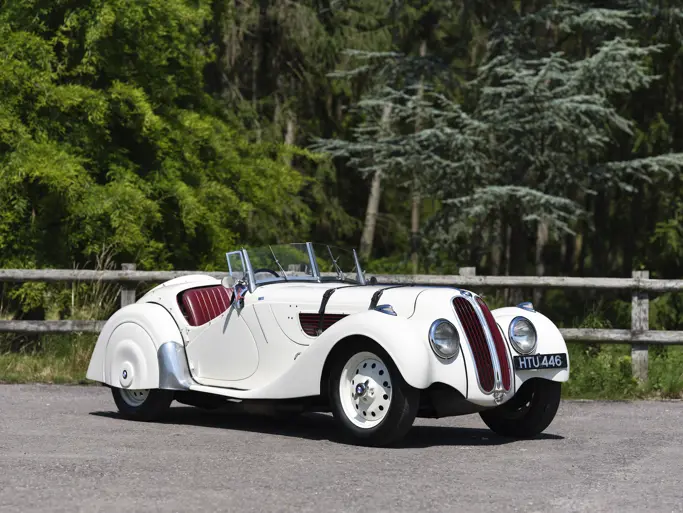Monterey 2021
1935 AC 16/60 Saloon 'Greyhound'
The Feldman Collection
{{lr.item.text}}
$42,000 USD | Sold
 | Monterey, California
| Monterey, California
{{internetCurrentBid}}
{{internetTimeLeft}}

- Seminal “Greyhound” saloon
- 60-hp, triple-carbureted inline-six; four-speed transmission
- A comfortable yet sporty saloon of classic British proportions
- Well-maintained older restoration
AC’s introduction of the “Greyhound” two-door saloon in 1934 demonstrated both the maturing direction of the company under the Hurlock brothers and development of AC’s well-deserved reputation for sound performance and affordable quality. It also showed the adaptability of John Weller’s 1,991-cubic-centimeter overhead-camshaft six-cylinder, then in production for 15 years—and serving as the sole engine powering a wide variety of AC models and body styles.
In 1932, only two years after AC’s acquisition by the Hurlocks, a new chassis had been designed. Weller’s transaxle, beloved by S.F. Edge during his ownership of the marque, had been replaced by a more conventional gearbox attached to the engine and clutch.
The problem of adapting the Weller engine to increasing power expectations in the marketplace, meanwhile, was resolved by adding carburetors, a measure which many of AC’s competitors overlooked. With three SU carburetors feeding directly into the cylinder head’s ports, the standard AC made 60 reliable and responsive horsepower. Later increases in compression ratio and camshaft improvements would bring this same design to 70 and even 80 horsepower, extremely good for a 2-liter engine in the mid- and late-1930s.
Jim Feldman’s 1935 AC 16/60 Greyhound personifies the value and performance available from AC at the time. Its roomy, enclosed two-door body has ample room for a family, but sufficient performance to satisfy an owner with sporting inclinations.
Finished in green with a black padded roof, it has attractive beige leather upholstery, matching carpets and a fetching sunburst pattern stitched into the door panels. The interior is alive with brightly varnished wood framing the side windows’ sliding panes and continuing across the dashboard. Its non-synchro gearbox has an upside-down shift pattern (first gear is left and back). Nicely appointed, it has a top-hinged opening windshield, silver-painted wire wheels with Firestone tires, a single sidemount spare wheel and tire, Lucas headlamps and a single dip beam light, dual outside mirrors on the wings, lighted semaphore turn signals behind the doors, a mesh screen radiator stoneguard and, appropriately, a leaping greyhound radiator cap mascot.
During restoration the original aluminum engine block, which had been damaged by electrolysis between the aluminum block and steel cylinder liners, was retained but extensively repaired by stitch-welding a new water jacket atop the crankcase portion, attention to detail which characterizes Jim Feldman’s dedication to retaining originality. Having been consistently maintained in Jim Feldman’s ownership since 1989, it is an orderly, usable example of an important model in AC history.

